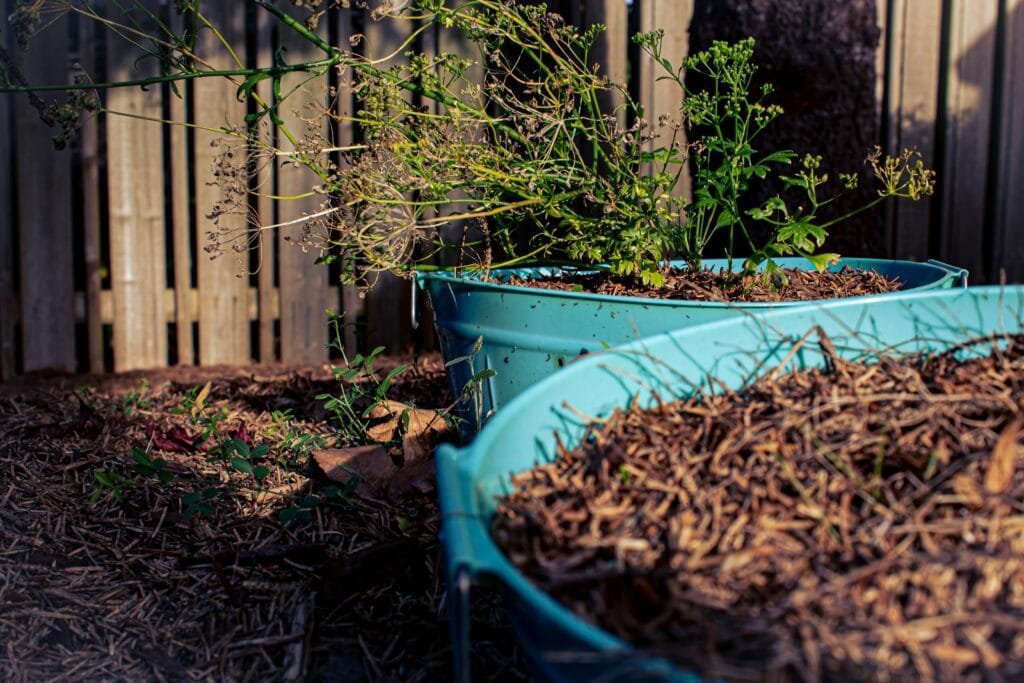When you think of a garden, what comes to mind? Maybe it’s neat aisles of vibrant vegetables lined up under a bright, shining sun. Maybe it’s a wild patch of flowers buzzing with pollinators or a bushy patch of herbs growing in terracotta pots. The truth is, there isn’t just one way to garden. Throughout history and across cultures, people have come up with creative ways to work with the land. Sometimes it’s born out of necessity, sometimes from tradition, but in all ways it’s from a deep observation of nature.
Exploring these different gardening styles isn’t just about finding new techniques to try, it’s also about connecting with the roots of how people have grown food and nurtured the earth for generations. Studying different methods of gardening can also benefit you! You can use methods that work for you and blend them with what you already know, and maybe you can more effectively upkeep your garden! So let’s dig into a few of these fascinating gardening methods.

The Three Sisters Planting Style
Let’s start with one of the most well-known traditional methods: the Three Sisters. This is a planting style rooted in Native American agricultural tradition, where corn, beans, and squash are grown together.
Here’s a rundown of how it works:
- Corn grows tall, providing a natural “pole” for beans to climb.
- Squash spreads along the ground, its broad leaves shading the soil to lock in moisture and keep weeds at bay.
- Beans fix nitrogen into the soil, enriching it so all three crops can thrive.
It’s a perfect example of companion planting, which is where plants support one another instead of competing with each other. Beyond the practical benefits, the Three Sisters also hold cultural meaning. Many Indigenous peoples considered these crops sacred, representing a form of interdependence and balance.
For modern gardeners, planting the Three Sisters is not only a smart way to maximize space but also a way to honor this tradition of working in harmony with the land.
Keyhole Gardening
Now imagine you have limited space and resources, but you still want a thriving garden. Enter keyhole gardening, a method that originated in parts of Africa where water conservation was critical. Picture a circular raised bed with a little notch cut out, like a keyhole, that allows you to step in and tend to the center. At the very middle, there’s usually a compost basket where you can toss kitchen scraps and water. As the compost in the center breaks down, it enriches the soil around it. The raised bed walls also help lock in moisture.
This system is incredibly efficient. It combines composting, water conservation, and gardening into a cohesive, interwoven gardening arrangement. You can grow a surprising amount of vegetables in a small space, and the design makes it accessible for people who may have limited mobility.
Today, keyhole gardens are popping up far beyond their origins because they’re practical for urban backyards and community gardens alike.

The Olla Watering System
Water has always been a historic challenge in gardening, especially in dry or arid climates. Long before drip irrigation systems, gardeners in ancient China and North Africa used a clever tool called the olla (pronounced “oy-ya”).
An olla is a porous clay pot that you bury in the ground near your plants. You fill it with water, and because of the clay’s natural porous properties, the water slowly seeps through into the soil. Plants draw moisture when they need it, and evaporation is kept to a minimum. It’s basically nature’s version of a self-watering system.
This technique has been around for over 2,000 years, yet it feels just as relevant today, especially for anyone looking to conserve water. Many areas are prone to droughts, and drought-affected areas are also increasing. According to the Center for Climate and Energy Solutions, drought-prone areas are also expected to experience worse droughts more frequently and for longer periods of time. Ollas are a great way to use the water that you have more efficiently.
You don’t need to live in a desert to benefit from ollas either. Even in a backyard garden, they cut down on daily watering and encourage deeper root growth in plants.

Raised Bed Gardening
Raised beds may seem like a modern invention, but the idea has roots in many cultures. Historically, raised garden structures were used in parts of China and Europe to improve drainage, keep out pests, and create fertile growing spaces where the natural soil wasn’t ideal.
The principle is simple: you build a contained bed above ground, fill it with soil and compost, and plant directly into it. It gives you more control over soil quality and makes gardening more comfortable and accessible for those with limited mobility (no deep bending required).
In recent decades, raised beds have become a staple in community and backyard gardens. They’re especially popular among new gardeners because they’re easy to maintain, highly customizable, and versatile in both urban and rural spaces.
Hügelkultur
This term comes from Germany and Austria, where hügelkultur means “mound culture.” It’s essentially a raised bed built from logs, branches, leaves, and compost, topped with soil.
As the wood inside breaks down over time, it releases nutrients and helps the mound retain water like a sponge. The result is a nutrient-rich, long-lasting garden bed that reduces the need for fertilizer and irrigation.
The origins of hügelkultur lie in making the most of whatever available resources were present. Instead of letting old wood rot away unused, gardeners turned it into a powerhouse growing system. Today, permaculture enthusiasts love it because it mimics natural forest floors and recycles organic matter back into the earth.

Container Gardening
While not tied to a specific origin story, container gardening has been a solution for centuries, especially in urban areas where there is limited ground space. From the use of clay pots in ancient Rome to decorative planters in Victorian England, people have always found ways to grow plants in portable vessels.
Today, container gardening is especially popular for apartment dwellers or anyone short on space. You can grow herbs on a windowsill, tomatoes on a balcony, or even small fruit trees in large pots (with consistent pruning, of course). It’s proof that you don’t need stretches of land to enjoy the rewards of gardening.

Vertical Gardening
Similar to containers, vertical gardening is another clever way humans have adapted to tight spaces. While modern vertical gardens often look sleek and futuristic, the idea of growing upward isn’t new. Ancient civilizations used trellises, walls, and stacked systems to maximize growing space.
Whether it’s climbing beans on a pole, strawberries in stacked planters, or a full green wall indoors, vertical gardening makes use of space that would otherwise sit empty. It’s especially helpful for city gardeners who want to make the most of balconies and patios.
Final Thoughts
You might wonder, “Why does it matter where these techniques came from?” The beauty of gardening is that it connects us; not just to the earth, but to traditions and cultures around the world. Every method carries a story of people observing nature, adapting to challenges, and working creatively with the resources they had. When we practice these methods today, we’re not only growing food or flowers. We’re carrying forward centuries of wisdom and innovation.
If you’re inspired to try these methods, start small. Maybe dedicate one bed to the Three Sisters, experiment with an olla near your tomatoes, or build a keyhole garden for your kitchen scraps when a compost container is too much. Even on a balcony, you can explore container and vertical gardening to bring in these traditions.
The magic of gardening lies in its adaptability. No matter where you live or how much space you have, there’s always a way to grow something. And often, there’s a time-tested tradition to guide you. These different styles remind us that humans have always been resourceful when it comes to growing food, and that wisdom is just as valuable today as it was centuries ago.
Disclaimer: Gardening advice on this site is shared for educational and recreational purposes only. Local climate, soil, and environmental factors can affect outcomes. Please research region-specific practices and consult gardening experts for personalized advice.

